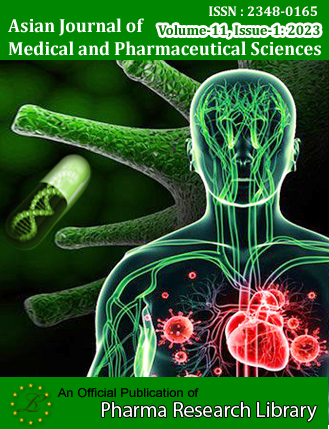Clinical correlation between Pattern of pseudoexfolative Deposits and its Severity of Glaucoma in Iraq
DOI:
https://doi.org/10.30904/Keywords:
Pseudoexfoliation syndrome (PEX), pseudoexfoliative glaucoma (PEG), pseudoexfoliative material (PXF), intraocular pressure, open-angle glaucomaAbstract
Background: Pseudoexfoliation syndrome (PEX) is characterized by the accumulation of pseudoexfoliative material (PXF) in ocular tissues. Early diagnosis and timely management of PEX are crucial since it is the leading cause of secondary glaucoma in Iraq. Aim: To review current perspectives on the pattern of PXF deposits and evaluate their possible clinical correlation with the severity of glaucoma in the Iraqi population. Methods: Demography and medical history of participants were noted in a case report form. Subjects underwent visual acuity measurement, subjective refraction, and central corneal thickness (CCT) measurement by optical method. Intraocular pressure (IOP) was measured by Goldman applanation tonometry. A slit-lamp examination of each eye was conducted before and after the instillation of mydriatic eye drops. Patients were evaluated by a glaucoma specialist to confirm pseudoexfoliation glaucoma (PEG). Further, clinical correlation was done between the pattern of PXF deposits (whether capsular–dominated or pupillary-dominated) with the severity of glaucoma. Statistical data were entered in Microsoft Excel 2016. . Statistical analysis was done using SPSS V24 software where the chi-square test. P value <0.05 was considered as statistically significant. Results: A total of 79 patients’ 113 eyes with PEX were examined for the presence of PEG. The mean age was 65.66 ± 6.003 years (50-83years). PEX was more common in females [n=61(53.98%)] than in males [n=52(46.02%)]. The correlation between the pattern of PXF deposit on anterior segment structure and PEG was not statistically significant (P=0.205). Severe glaucoma was significantly associated with capsular-dominated PXF deposits compared to pupillary-dominated PXF deposits (40.7% vs 15.6%) with P=0.014. Capsular-dominated PXF deposits were significantly associated with good pupillary dilatation (45.7% vs 18.8%) as compared to pupillary-dominated PXF deposits with a P=0.01. Conclusion: The findings demonstrate that PEX with capsular-dominated PXF shows an increased risk of severe glaucoma over the pupillary-dominated deposits. Also, good pupillary dilatation is significantly associated with a capsular pattern of PXF deposits. Larger multicentre studies are needed to confirm these findings and apply the results towards better eye health outcomes.
Downloads
Published
Issue
Section
License
Copyright (c) 2023 Author

This work is licensed under a Creative Commons Attribution-NonCommercial 4.0 International License.

